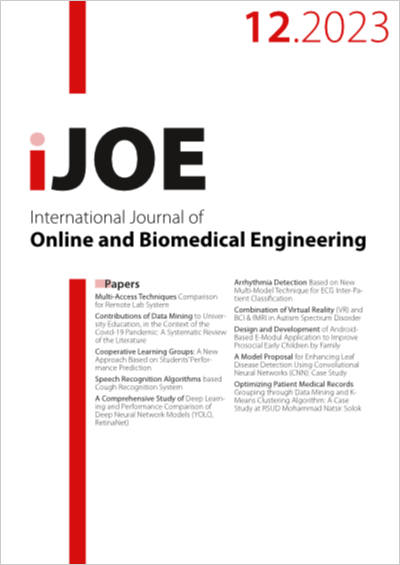Combination of Virtual Reality (VR) and BCI & fMRI in Autism Spectrum Disorder
DOI:
https://doi.org/10.3991/ijoe.v19i12.37625Keywords:
ASD, Virtual reality, virtual environment, BCI, fMRI, EEG, emotional intelligenceAbstract
The combination of virtual reality and fMRI is an innovative methodology that is used to make inferences about the neurological stimulations that take place in the brain of the person with ASD during the use of the VR tool. At the same time, the use of the Brain-Computer Interface (BCI) will be important, as it can be used to achieve direct interaction between the person with ASD and the computer. Still, equally important conclusions can be arrived at through the EEG electroencephalogram, also establishing the neurological processes that are carried out during the use of the VR tool. The use of the two technologies mentioned above contributes to presenting in-depth conclusions and data about the emotional state experienced by children with ASD throughout the experimental process and their interaction with the virtual reality tool.
Downloads
Published
How to Cite
Issue
Section
License
Copyright (c) 2023 Angeliki Sideraki, Athanasios Drigas

This work is licensed under a Creative Commons Attribution 4.0 International License.



